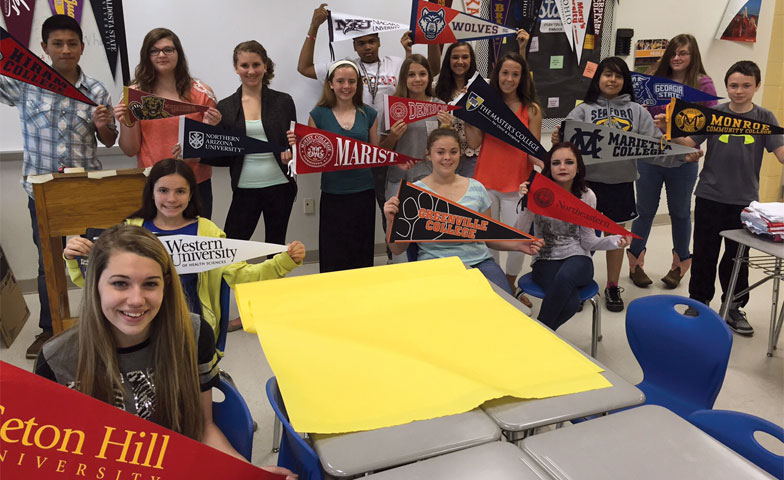Middle school is not too early to encourage students to dream big.
Middle school is not too early to encourage students to dream big, to see college as a real part of their future.
In one middle school in rural Maryland, teachers wove a college and career readiness component into a research unit, helping students hone their research skills as they learned about college and how to get there.
Researching College
The teachers challenged the students with this scenario:
Today, you are no longer an eighth grade student. Your new job title is Admissions Representative. You are working for either a two-year or four-year college/university or trade school. You need to know everything about your school so you can explain to prospective students why your school would be the one that they want to attend. There are three research components—Academic Excellence, College Life, and Financial Reality—that you are required to explore so you can give a thorough presentation.
Be prepared to become the expert on your institution of higher education.
Each component gave students a different view of college and the college-going experience.
Academic Excellence: Students researched admissions requirements and specifics for majors that applied to a career that interested them. Opening students’ eyes to admissions requirements, including GPA and SAT/ACT, prompts them to reflect on their academic work at the middle school level. It also helps steer their high school planning as they consider courses they will need to prepare them for their college major.
College Life: Students are often anxious about what goes on outside the college classroom. They learn about on-campus and off-campus housing, meal plans, cocurricular activities, and the off-campus social scene. Using Google Maps to get a snapshot of their chosen campus and community is eye opening for many young students.
Financial Reality: Students must understand that college is an expensive endeavor. Students who have a high GPA or come from a single-parent home might believe college will be free or cheap because they are smart or because they are considered high need. Many assume their parents have the money to pay their tuition expenses—which may not be the case.
Students must be realistic in determining how they will afford college or career training beyond high school. Understanding the reality of the financial burden of college helps them make decisions about colleges that fall within their or their families’ budget.
Culminating Activity
As the culminating activity, students presented their newfound information from the perspective of a college admissions representative. They were charged with ensuring the information was easily understood and was presented in a visual manner. Their presentations were to be no more than three minutes.
Many students used Wix (www.wix.com) or Weebly (www.weebly.com) to create a college website. Some students used iMovie, PowerPoint, or Prezi to present important information to prospective students; others went the traditional route with a trifold brochure.
Having the flexibility to determine which tool best fit their presentation was motivating and encouraging. Regardless of the vehicle, students were required to display mastery of writing, speaking, and listening standards.
Taking to Twitter
To help pump up the excitement about college, a team of teachers took to Twitter and sent short tweets to every college and university listed on Wikipedia, highlighting the students’ presentations and asking for a pennant or promotional item to display in the school.
Admission staffs responded eagerly as they saw a chance for publicity for their school. Users all across Twitter were clicking the retweet and favorite button of photos of middle school students sharing their knowledge about colleges and universities. Education institutions from all 50 states were represented by pennants displayed around the school.
Lasting Impact
Helping middle school students explore college and career options may not seem like a priority, but it will alter the lives of those students down the road. Sparking intellectual curiosity and provoking students to dream can make everlasting impressions on their minds and hearts.








